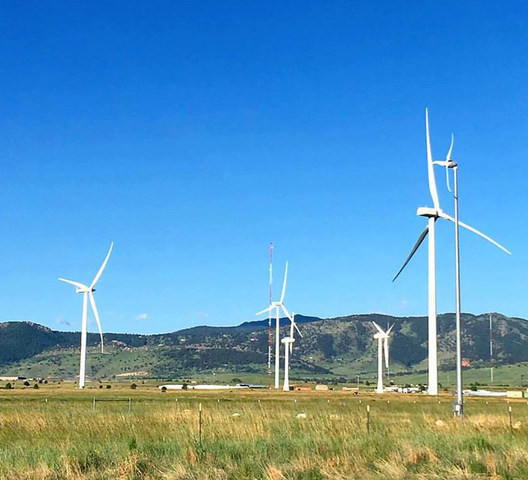
The IACMI-led project is aiming for reduced costs and recyclability of wind turbine blades. Image Courtesy of IACMI
Latest News
February 14, 2017
What’s the best way to advance the design and manufacture of wind turbine blades? Lean on public/private partnerships—in this case, an initiative between The Institute for Advanced Composites Manufacturing Innovation (IACMI) and a string of universities and private industry firms to collaborate on the advancement of thermoplastic composite materials.
While thermoset composites reinforced with fiber have become the material of choice for large-scale wind turbine development, the technology is not without challenges. Specifically, companies have been struggling to keep manufacturing costs low while also grappling with design issues related to performance and recyclability.
 The IACMI-led project is aiming for reduced costs and recyclability of wind turbine blades. Image Courtesy of IACMI
The IACMI-led project is aiming for reduced costs and recyclability of wind turbine blades. Image Courtesy of IACMIIACMI, which functions as a Manufacturing USA Institute driven by the University of Tennessee in Knoxville, and the U.S. Department of Energy, is now joining up with a number of additional universities and industry players like Johns Manville, a provider of building insulation and commercial roofing, and Arkema, a global chemicals and materials manufacturing company, among others. The partners plan to explore new developments in thermoplastic materials with their goal being to lower production costs, improve recyclability and expand applicability so the components can be produced at large scale more efficiently.
By doing so, the team of partners hope to reduce manufacturing costs and promote process improvements for the large-scale turbine blades, as well as increase reliability in how the composite structures are produced. “These upcoming advancements will reduce lifecycle energy use and strengthen manufacturing innovations in wind turbine blade production,” said Bryan Dods, the CEO of the IACMI Composites Institute, in a press release announcing the partnership.
Wind Turbine Prototype Uses New Material
Key industry partners, which represent the entire wind turbine industry supply chain, came together to show off an early prototype of a 9-meter long wind blade, which was fabricated at the IACMI’s Wind Technology Area, earlier this month at the Winter IACMI meeting, officials said. A team of 11 industrial partners, including Arkema, Johns Manville and TPI Composites, one of the largest U.S. manufacturers of composite wind blades, participated in the construction and assembly of the wind blades.
For its part, Arkema will expand its work to include a new thermoplastic liquid resin said to enable the production of continuous fiber reinforced thermoplastic parts using typical closed mold thermoset processes. Partners Purdue University and Convergent Manufacturing Technologies are working on simulation tools to enable new large-scale wind turbine design and manufacturing processes, and a newly commissioned Vacuum Assisted Resin Transfer Molding (VARTM) lab at partner the Colorado School of Mines (CSM) will be ground zero for fabricating the concept panels. The full-scale blades will be manufactured at a different facility.
According to reports, the prototype blade is based on existing work by the Department of Energy, but includes innovations such as impact resistant components, continuous fiber reinforced thermoplastic parts, and exterior shell pieces that were produced with less than half of the normal CO2 emissions.
To find out more about the large-scale turbine production process and the new thermoplastic materials, watch this video.
Subscribe to our FREE magazine, FREE email newsletters or both!
Latest News
About the Author
Beth Stackpole is a contributing editor to Digital Engineering. Send e-mail about this article to [email protected].
Follow DE





